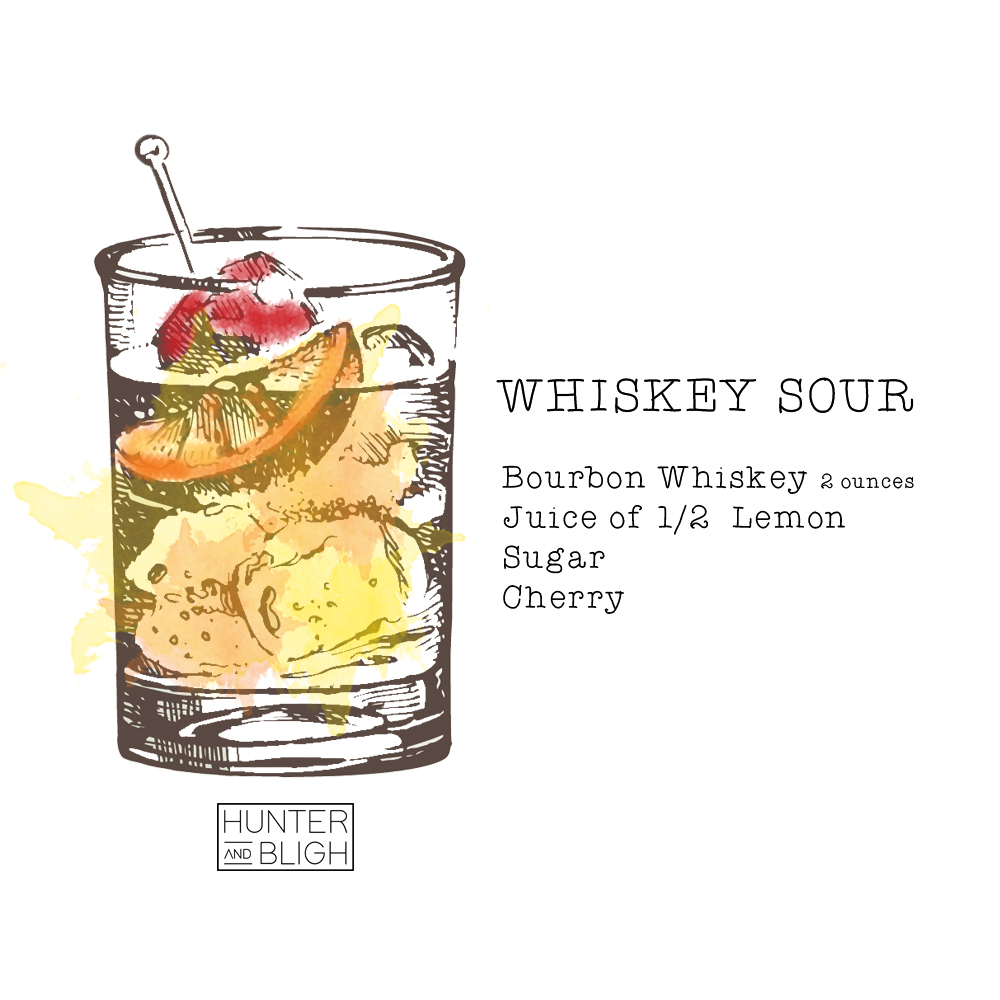The whisky sour has been around since at least the mid-1800s.
However, it is likely to have been around in some form for at least a century prior. Its history is rather like that of the gimlet but instead of a gin/citrus combination, it is a whisky/citrus mix. “Sours” began life as a “short” punch. The tale of cocktail development starts with punches and progresses through their shortening to single drinks. The combination of spirit, citrus and sugar was common in some form since sailors started taking citrus with their spirit ration to stave off scurvy – the Spanish were using citrus for this purpose from around 1500.
The key consideration in any sour is the balance between the amount of citrus to sugar. In Harry McElhone’s recipe below he recommends “sugar to taste” while Jerry Thomas states “1 large teaspoonful”. It is also worth noting that lemons were small until fairly recently so bear that in mind when preparing your drink from an old recipe.
Due to its American origin it is most often made with bourbon although it is a good idea to specify your preference depending on where you are.

Created by Hunter and Bligh.
RECIPE:
Sometimes mixed with a combination of lemon and lime, you might want to have lemon as the juice and a lime wedge as the garnish or vice versa. The garnish is also variable depending on where you look. There are “traditional” recipes that specify half an orange slice with a cherry, but it is inconsistent. Egg white is also something I have seen increasingly, which makes it creamier and more filling.
Harry MacElhone (Harry’s New York Bar, Paris) 1919:
1. In a shaker add 60mL of Bourbon Whisky, juice of ½ lemon and sugar to taste.
2. Shake and strain into an old fashioned glass, decorate with cherry.
Alternatively, as detailed by Johnny Walker, you can also add in a dash of Angostura bitters and an egg white to your cocktail shaker to form a more foamier head.
Hemingway
Hemingway mentions a whisky sour in the F. Scott Fitzgerald chapter in A Moveable Feast. Fitzgerald is sick in a hotel room and Ernest orders two citron presses and two double whiskies. He gives Scott the mixed lemonade and whisky and two aspirins. Scott was one of Ernest’s earliest literary friends and supporters and it is perhaps because of this Hemingway treated him so badly in later years. Scott had heavily edited Hemingway’s The Sun Also Rises, which greatly improved the book and Ernest never really forgave him for it.
It is in this relationship we see the worst of Hemingway. In his memoir, A Moveable Feast (published posthumously) he writes, “…for years too, I had no more loyal friend than Scott when he was sober.” However, he later cruelly recalls Scott’s worry about the size of his penis. Even after Scott’s death when his work was going through a revival, Hemingway found it difficult to find praise. He wrote of him as being, “completely uneducated”. And, “Where other people were dazzled by him…the great flaw…was always there.”
I first drank a whisky sour about 20 years ago and didn’t like it much. It reminded me of the hot toddies my mum would make me drink when I was sick. My dislike was also philosophical. When I made my youthful commitment to drink whisky I felt strongly about taking it straight or if drinking a single malt, with a little water.
However, for the sake of this review I have put my antipathy aside and given them a go. I recently had them with Makers Mark Bourbon and Johnny Walker Black Label – I am starting to get a taste for Johnny Walker in whiskey cocktails. Rather than mix raw sugar I have been using a simple syrup which is great.



